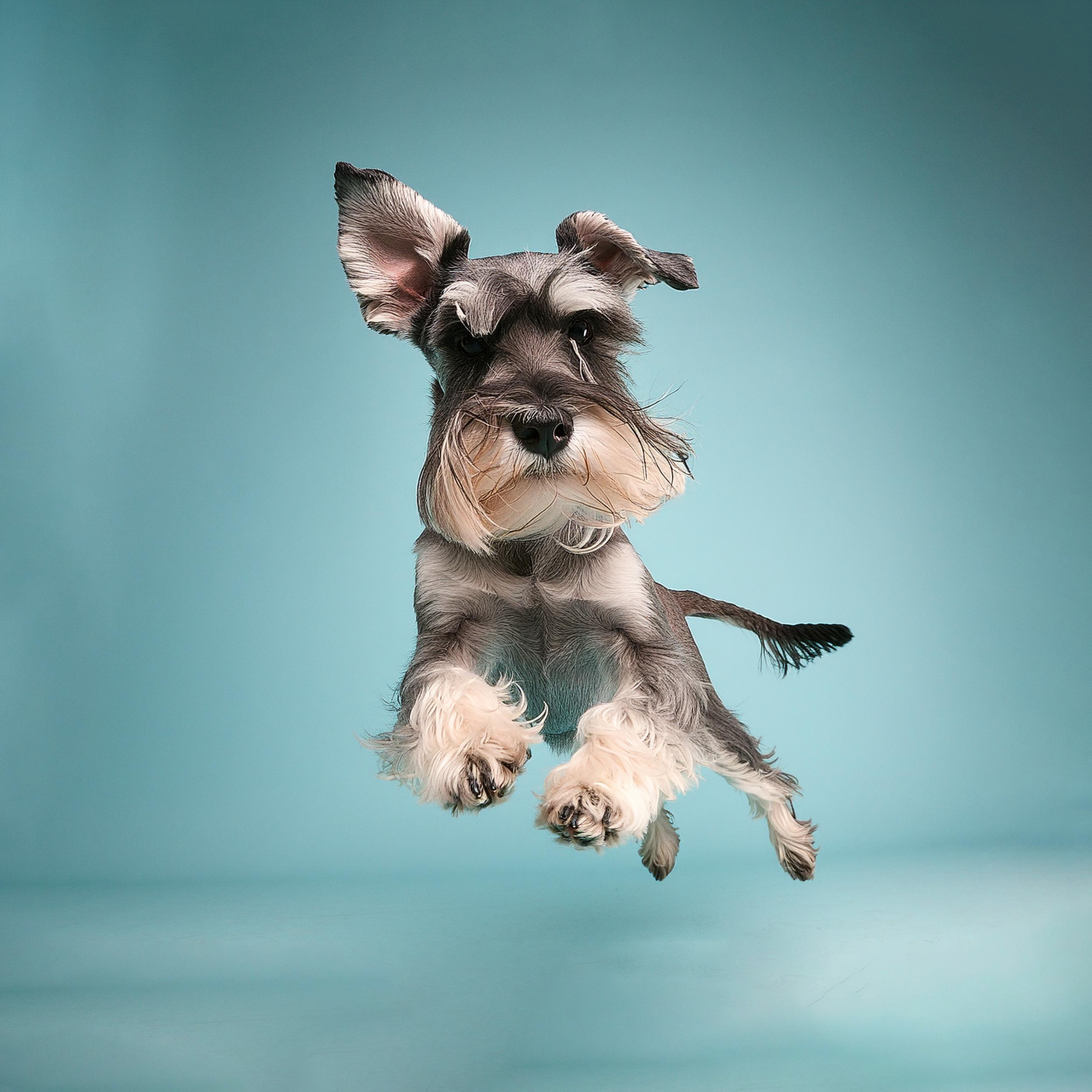Size
While female schnauzers reach around 44-47 cm in height, male schnauzers achieve 47-50 cm. As for other physical data, if the length of a female Schnauzer ranges from 71-76 centimeters, in the case of a male Schnauzer, this figure reaches 76-79 centimeters.
Weights
Individual cases of Schnauzer weight vary according to genetics, diet, and health condition. However, as a rule, adult representatives of the breed weigh from 14 to 20 kilograms.
Lifespan
A Schnauzer’s lifespan ranges from 13 to 15 years and is roughly equivalent to 74-83 years of human existence. But still, remember, these figures are only conditional, and the life expectancy of your important family members depends on their healthy lifestyle and harmonious living environment.
Fur
The Schnauzer’s short, coarse coat requires grooming every other day. Like other companion animals, these important family members have a double coat, the top layer of which protects their skin from dust as well as water.
The texture of the fur of the standard, miniature, and giant representatives of the breed may differ slightly from each other, although the visuals are usually identical. You will find them mainly in white, black, gray, and brown colors. Due to their minimal shedding, the Schnauzer is an excellent choice for people suffering from allergies.

